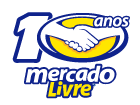sábado, 9 de fevereiro de 2008
Microsoft Surface - The Possibilities
What is Microsoft Surface?
Microsoft Surface™, the first commercially available surface computer from Microsoft Corp., turns an ordinary tabletop into a vibrant, interactive surface. The product provides effortless interaction with digital content through natural gestures, touch and physical objects. Surface is a 30-inch display in a table-like form factor that's easy for individuals or small groups to interact with in a way that feels familiar, just like in the real world. In essence, it's a surface that comes to life for exploring, learning, sharing, creating, buying and much more. Soon to be available in restaurants, hotels, retail establishments and public entertainment venues, this experience will transform the way people shop, dine, entertain and live.
How does Surface work?
At a high level, Surface uses cameras to sense objects, hand gestures and touch. This user input is then processed and the result is displayed on the surface using rear projection.
What is surface computing?
Surface computing is a new way of working with computers that moves beyond the traditional mouse-and-keyboard experience. It is a natural user interface that allows people to interact with digital content the same way they have interacted with everyday items such as photos, paintbrushes and music their entire life: with their hands, with gestures and by putting real-world objects on the surface. Surface computing opens up a whole new category of products for users to interact with.
What are the key attributes of surface computing?
Surface computing has four key attributes:
Direct interaction. Users can actually "grab" digital information with their hands and interact with content by touch and gesture, without the use of a mouse or keyboard.
Multi-touch contact. Surface computing recognizes many points of contact simultaneously, not just from one finger, as with a typical touch screen, but up to dozens and dozens of items at once.
Multi-user experience. The horizontal form factor makes it easy for several people to gather around surface computers together, providing a collaborative, face-to-face computing experience.
Object recognition. Users can place physical objects on the surface to trigger different types of digital responses, including the transfer of digital content.
(Tinha pensado em traduzir mas esses tradutores são uma perfeita falta de lógica)
Assinar:
Postar comentários (Atom)



















Um comentário:
Traduz essa porra ai, tu pensa que todo mundo fala ingles igual tu!!
Postar um comentário